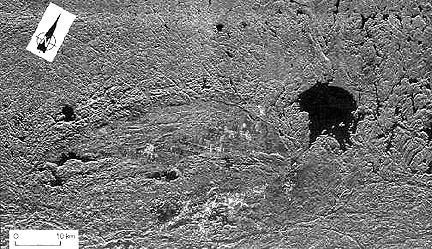Файл:SIR-B Sudbury Impact Crater.jpg
SIR-B_Sudbury_Impact_Crater.jpg (432 × 249 пиксела, големина на файла: 87 КБ, MIME-тип: image/jpeg)
История на файла
Избирането на дата/час ще покаже как е изглеждал файлът към онзи момент.
| Дата/Час | Миникартинка | Размер | Потребител | Коментар | |
|---|---|---|---|---|---|
| текуща | 19:46, 2 януари 2017 |  | 432 × 249 (87 КБ) | Quibik | desaturate since it is a single-band image |
| 04:09, 14 юни 2011 |  | 432 × 249 (92 КБ) | Oaktree b | {{Information |Description ={{en|1=A SIR-B radar image of southern Ontario highlights two juxtaposed but unrelated craters that are very different in age, in size, and in structural state. SIR-B radar image of the Sudbury impact structure (elliptical |
Използване на файла
Следната страница използва следния файл:
Глобално използване на файл
Този файл се използва от следните други уикита:
- Употреба в en.wikipedia.org
- Употреба в en.wikiversity.org
- Употреба в fi.wikipedia.org
- Употреба в fr.wikipedia.org
- Употреба в he.wikipedia.org
- Употреба в it.wikipedia.org
- Употреба в ja.wikipedia.org
- Употреба в pl.wikipedia.org
- Употреба в ru.wikipedia.org
- Употреба в simple.wikipedia.org
- Употреба в zh.wikipedia.org



